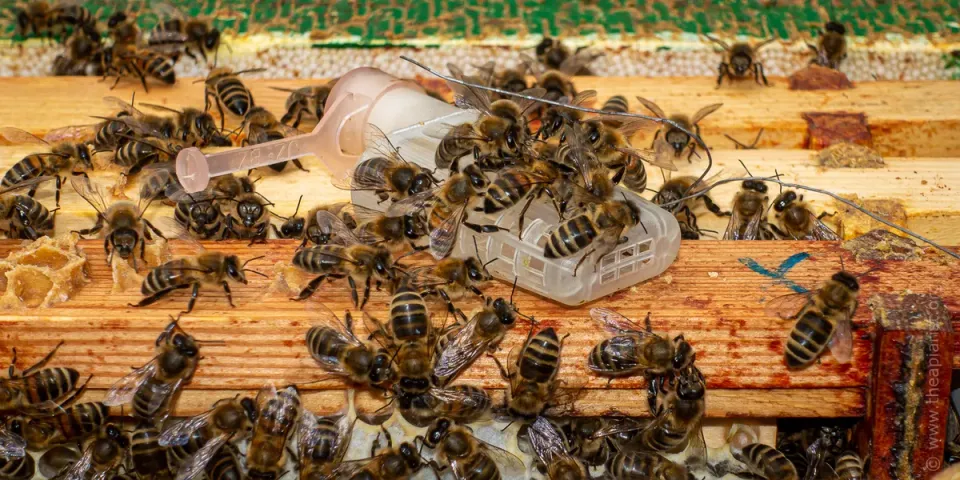Simple stock improvement

Regular readers will be aware that I've spent most of this season doing inspections in the rain.
At least, that's what it has felt like.
Regular beekeepers may have been doing the same thing, as the weather this year has been 'challenging' {{1}} to say the least.
There are two obvious solutions.
The first is to only inspect colonies when the weather is benign and when there's a good nectar flow keeping the foragers busy (and elsewhere).
Good luck with that 😉.
But most seasons have at least some poor days on which the colony really should be inspected.
Yes, you might be lucky, or have sufficient flexibility in your life (or live on the Côte d'Azur), meaning poor weather is never an issue. But the reality is that most of us have to put up with the vagaries of our temperate climate ... which means periodically inspecting colonies in less-than-ideal conditions.
The second solution (and don't think of these as mutually exclusive) is to keep well-tempered bees that are not overly-defensive, even when conditions are sub-optimal.
Well-tempered bees will be a benefit during every inspection, not just those in lousy conditions.
They make routine inspections - in good weather - a pleasure, and they are forgiving during those 'oops!' moments when you drop a frame, or spend 45 minutes searching (unsuccessfully) to find the queen.
They are also much better for beginners, and a real boon if you sell bees.